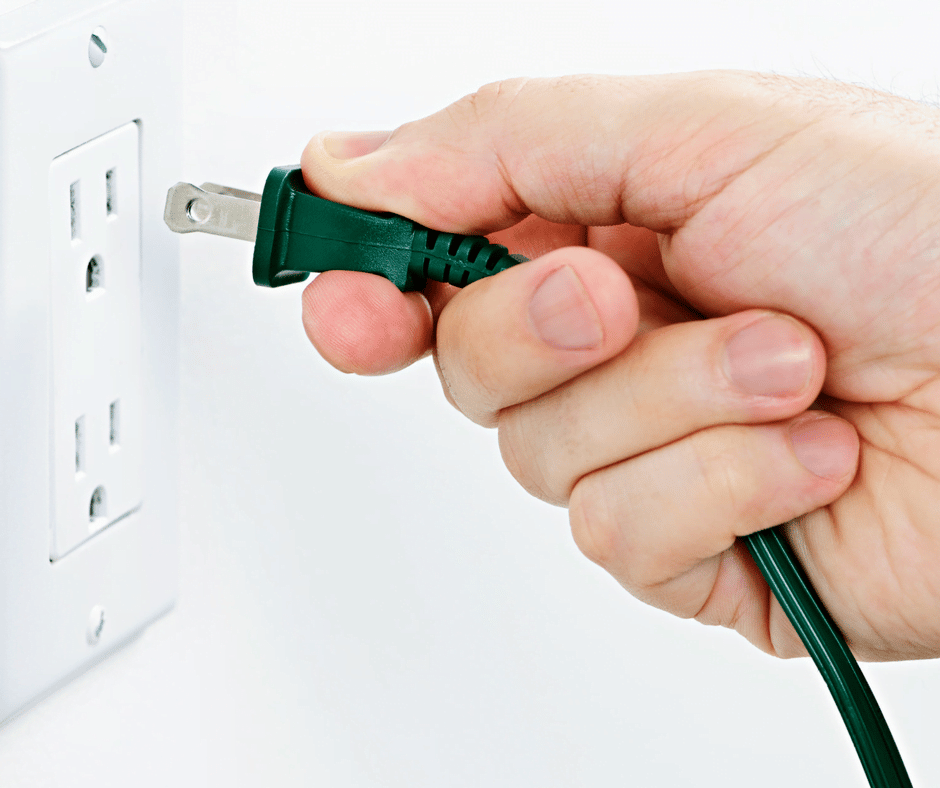Recent power outages across the state provide a perfect incentive to invest in a portable generator — but keep electrocution, CO2 poisoning dangers at forefront

If you’re one of the 857,000-plus DTE Energy and Consumers Energy customers who lost power during the recent, record-breaking windstorms in Michigan, I’m sure you’ve had thoughts about investing in a portable generator. This is understandable, as most of us would prefer backup power to keep the lights on and prevent refrigerator food from spoiling.
But before you start comparing prices or asking friends with a generator about how well they work, keep in mind the hazards that generators can pose — from electrocution to carbon monoxide poisoning, and from fires to lineworker deaths.
Where to place a generator and keep it dry
The U.S. Consumer Product Safety Commission says generators pose a risk of shock and electrocution, especially if they are operated in wet conditions. Most of the time when the power is out, it’s due to wind and rain, so an easy way to prevent a portable generator from moisture is to have it placed under an open, canopy-like structure. The surface should be dry and not susceptible to water reaching it or puddling or draining under it.
If your hands are wet, dry them before touching the generator. Never stand in water when setting up or operating a portable generator, and don’t operate a generator in a plastic tent or cardboard box, as they can burn and start a fire.
Look for a portable generator that’s equipped with ground fault circuit interrupter (GFCI) outlets to prevent electrocutions and shocks. As an electrocution attorney, I know that this is one of the many ways dangerous, even deadly accidents can occur.
No “back feeding” the generator
OSHA says generators should never be attached directly to the electrical system of a structure (home, office, trailer, etc.) unless a qualified electrician has properly installed the generator with a transfer switch. Attaching a generator directly to a building electrical system without a transfer switch can energize wiring systems for great distances, or cause “back feed,” which poses an electrocution risk to utility workers and neighbors served by the same utility transformer.
Connecting appliances to the generator
The U.S. CPSC also says that once the power goes out, appliances should be connected to the generator with heavy-duty extension cords that are specifically designed for outdoor use. The wattage rating for each cord must exceed the total wattage of all appliances connected to it. The extension cords should be long enough to allow the generator to be placed outdoors and far away from windows, doors and vents to the home or to other structures that could be occupied.
Check that the entire length of each cord is free of cuts or tears and that the plug has all three prongs. Protect the cord from getting pinched or crushed if it passes through a window or doorway.
Safely fueling the generator
Portable generators run on gasoline, which when burned off produces carbon monoxide. According to the U.S. CPSC, 657 portable generator-related carbon monoxide deaths occurred nationwide between 2004 and 2013. And during the recent power outage, a woman and two children in Detroit and two Jackson County residents died from high levels of carbon monoxide when they used a generator indoors.
The Centers for Disease Control and Prevention and the National Institute of Standards and Technology say that 15 feet from the home is not far enough to place a generator safely, as windows, doors and vents can catch carbon monoxide and bring it into the home. The U.S. CPSC recommends generators be placed at least 20 feet from the house. (Keep your neighbors in mind, too, and don’t have it placed close to their homes, either.)
The Detroit Fire Department cautions consumers to never fuel a generator while it’s running. To minimize the dangers of fire, shut it off and let it cool for at least 10 minutes before refueling. Like other gas-powered outdoor equipment, part of the generator get extremely, especially the muffler area. Keep your hands — and children — away from these hot spots.
Be sure enough fuel is on hand if the generator is going to be on for an extended period of time. During a power outage, gas stations may be closed.
And, of course, don’t smoke around the generator when it’s running.
